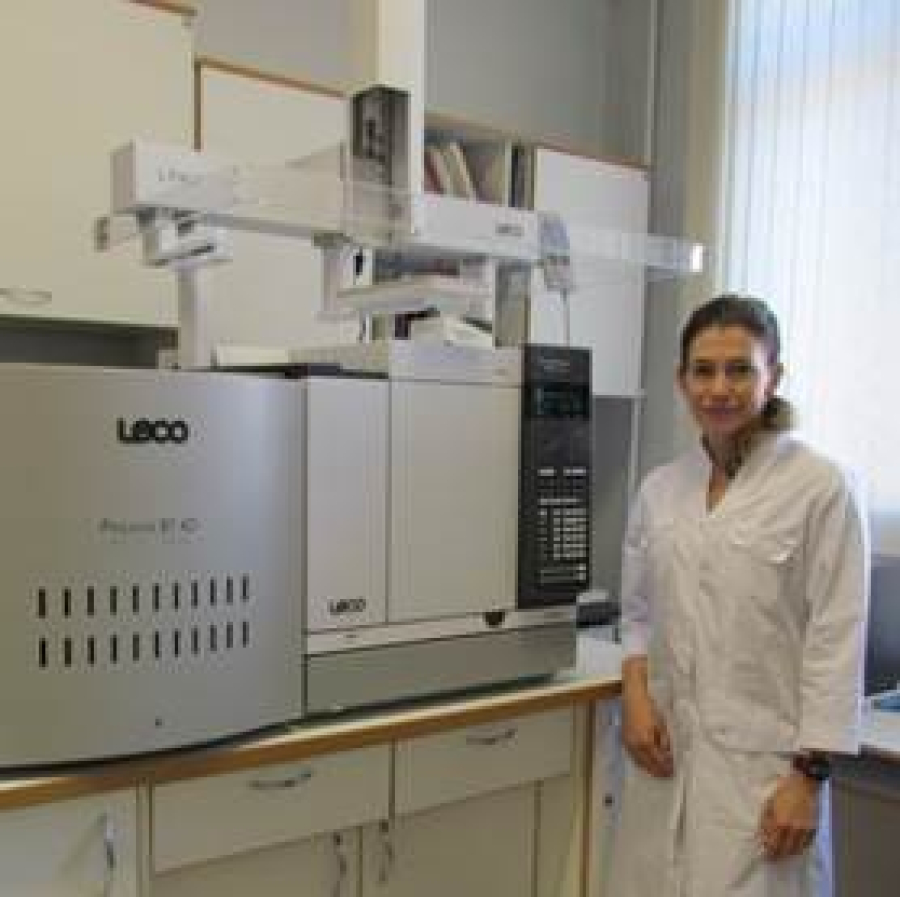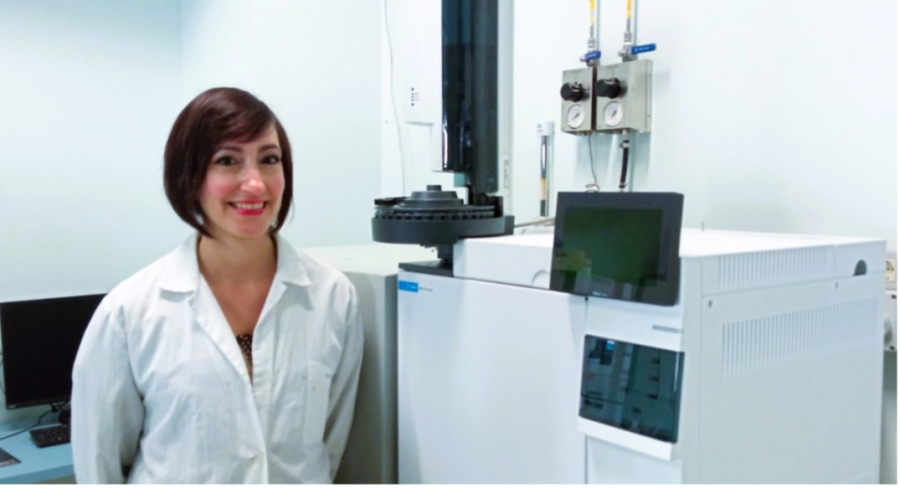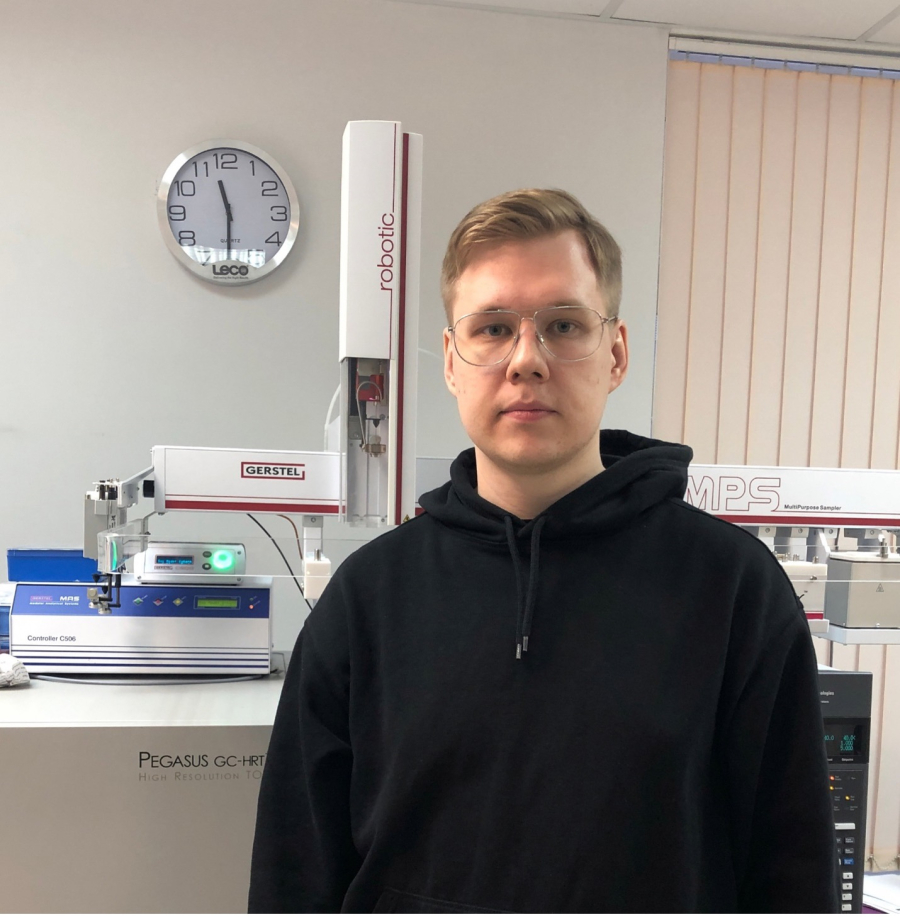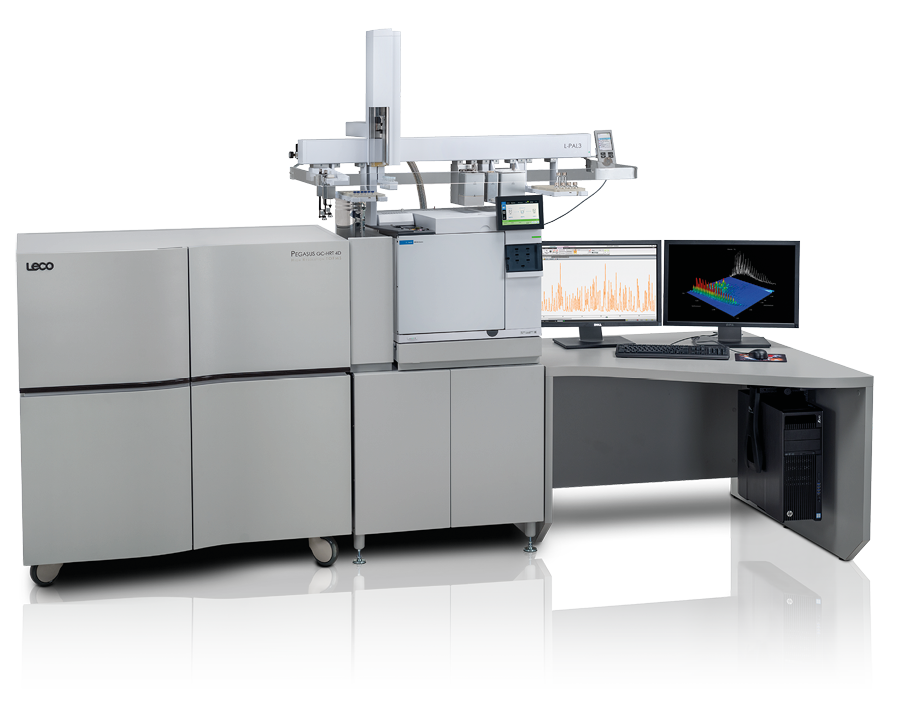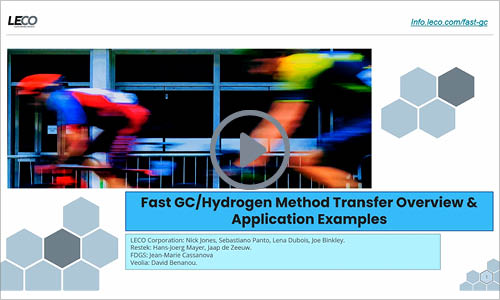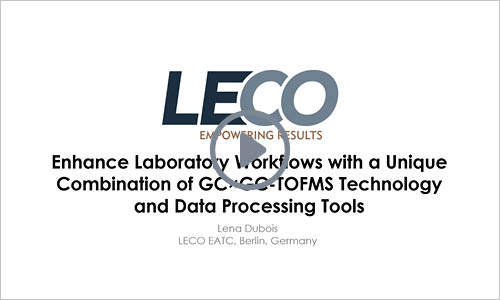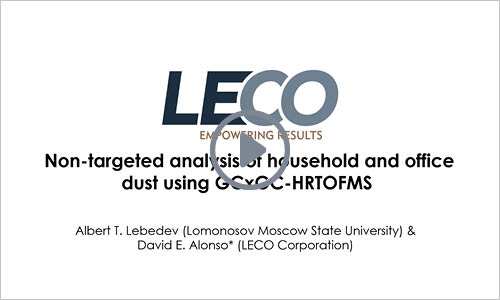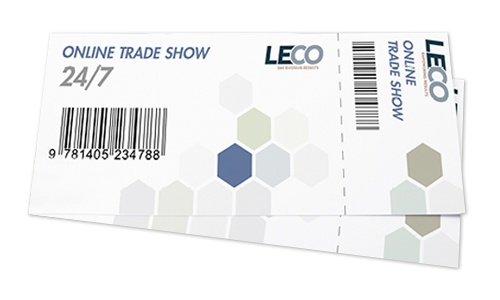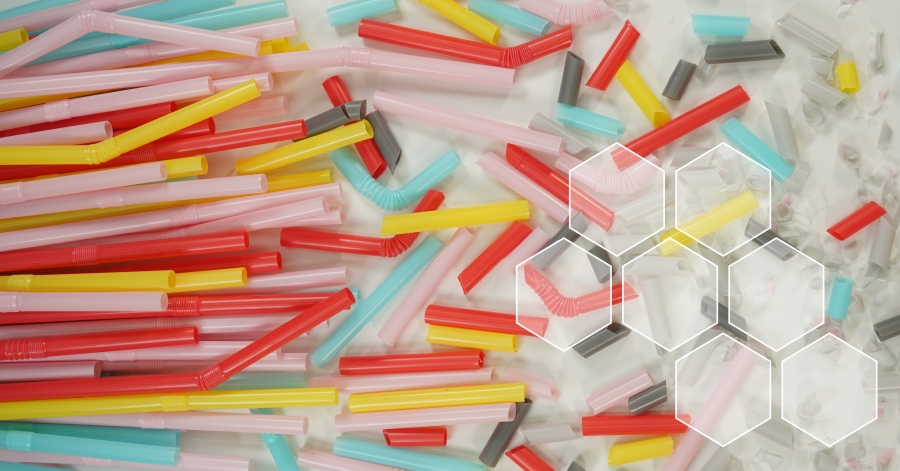
 LECO
Empowering Results
LECO
Empowering Results
Displaying items by tag: ChromaTOF
I use LECO PEGASUS® BT 4D to separate, identify and quantify secondary metabolites of various organisms. The advantages of the GC×GC system in separation of multi-component mixtures allow us to separate and identify a huge number of compounds in every samples. The ability to separate and quantify low levels of target analytes in mixtures simultaneously with the major components presented at a high level of concentration and to separate coeluted compounds is a great advantage of two-dimensional GC in comparison with one-dimensional GC. The user-friendly ChromaTOF software and excellent technical support make LECO a reliable partner for researcher. Since we started working on this equipment, our results have become more accurate and comprehensive, and our research has reached a new level.
We started using the LECO PEGASUS® BT GC-TOF mainly for target analysis of aliphatic hydrocarbons on environmental matrices; over time we had the need to develop a method for the qualitative characterization of hop leaves samples for a research project, the ChromaTOF® deconvolution software allowed the identification of several compounds, in particular different terpenes. The Pegasus BT GC-TOF thus proved to be an excellent system, easy to use, with high sensitivity and reproducibility, able to perform both non target and target analysis.
I started working with the PEGASUS GC-HRT+ 4D back in my student years. As a novice researcher, with no experience working with similar devices and no training, it was not easy at first. However, after years of working with this instrument and when compared with other sophisticated equipment in the field of gas chromatography - high-resolution mass spectrometry, I can confidently say that the ChromaTOF is the most user-friendly software of all those available now. Such a variety of functions, as well as very clear, convenient, and fast operation, combined with high-tech equipment, allows to get very decent results.
Over the past 5 years of using the Pegasus GC-HRT+ 4D, we have been able to conduct many various environmental studies, identifying trace amounts of substances in the cleanest Arctic environmental objects. At the same time, such a powerful combination of two-dimensional gas chromatography with time-of-flight mass spectrometry made it possible to analyze complex matrices, namely peat combustion products, herbal and tobacco cigarette smoke, petroleum and much more.
It is worth noting the work of the support service, which helped us very quickly and efficiently. I would like to thank the engineers for their work, who were on call almost 24/7. There are still many projects and tasks ahead that will undoubtedly be solved with the help of the Pegasus GC-HRT+ 4D.
Expedite Gas Chromatography Analysis with Hydrogen
For years, helium has been the go-to choice as a carrier gas for mass spectrometers due to its well-known benefits. However, its limited supply and varying costs have posed significant challenges for labs worldwide.
LECO has conducted extensive research on the use of hydrogen as a carrier gas for GC-TOFMS analysis. We have developed innovative method transfer approaches to ensure a smooth and efficient transition to hydrogen. With our proven expertise in the hydrogen conversion process, we can help labs of all sizes achieve increased chromatographic throughput without sacrificing the sensitivity and accuracy they demand.
As the supply of helium continues to dwindle, the use of hydrogen as a carrier gas for GC applications has become an increasingly attractive option. With both benefits and drawbacks to consider, it requires the expertise of a dedicated team to determine the optimal approach.
In the following sections, we will share the details of our approach, including the method transfer approaches used, the technological benefits, and application examples. At LECO, we understand the importance of providing comprehensive information and support. That's why we have put together a range of resources specifically on hydrogen conversion, to help you make an informed decision.

Don‘t miss out on this unique opportunity!
We know how valuable your time is, so we‘re bringing the experts and resources closer to you to show you how LECO instrumentation and hydrogen carrier gas can revolutionize your analysis, with live demos of our instruments and software.
Instrument Portfolio for Hydrogen carrier gas
We understand that the conversion from helium to hydrogen carrier gas can be a crucial step in mass spectrometry, where speed and sensitivity are of utmost importance. At LECO, we take pride in designing our PEGASUS® mass spectrometers to deliver exceptional performance in Fast GC applications with both helium and hydrogen carrier gas. Our instruments are built to provide high-speed analysis without compromising sensitivity, making them the ideal choice for labs looking to switch to hydrogen. In addition, with our innovative StayClean® Ion Source technology, you can be confident that your instrument will operate at peak efficiency, free from the need for frequent cleaning and maintenance.
On-demand Videos & Presentations
Helium is becoming an increasingly limited natural resource; using Hydrogen to achieve increased chromatographic throughput in GC applications is attractive. Both have advantages and disadvantages. LECO has for years investigated the use of Hydrogen as a carrier gas for GC-TOFMS analysis. In the following we are going to present you the method transfer approaches used, the technological benefits, and application examples.
► „Fast GC / Hydrogen Method Transfer Overview & Application Examples“
by Nick Jones, Sebastiano Panto, Lena Dubois, Joe Binkley (LECO Corporation, St. Joseph, MI USA)
Please click here for watching the video ...
► „GC×GC Analysis with Chroma TOF Tile“
by Lena Dubois (LECO ETAC, Berlin, GER)
Please click here for watching the video ...
► „GC-MS Analysis Workflow utilizing ChromaTOF Sync“
by Liz Humstom-Fulmer (LECO Corporation, St. Joseph, MI USA)
Please click here for watching the video ...
► „Discovery Workflow Best Practices for Environmental Contaminants“
by Albert T. Lebedev (Lomonosov Moscow State University), David E. Alonso (LECO Corporation, St. Joseph, MI USA)
Please click here for watching the video ...

Webinar: Enhance Your GC-MS Workflow
With ever-increasing demands on your time, labor, and resources, optimizing your workflow is essential. Learn best approaches from GC-TOFMS experts to enhance your one- and two-dimensional gas chromatography applications (GC-MS and GC×GC-MS) in this webinar.
Library – Hydrogen Carrier Gas Publications
Read our following publications and discover more about GC-TOFMS analyses with hydrogen as a carrier gas.
Thank you for submitting the form. You now have access to all files.
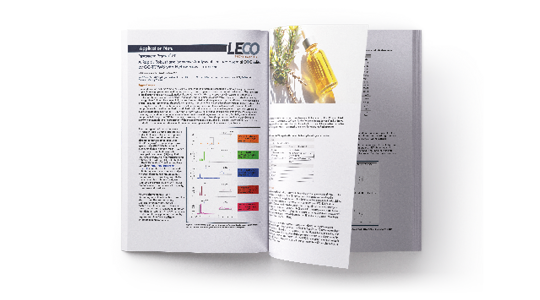
App Notes:
Hydrogen-based GC-TOFMS Analysis
The shortage of helium and its increased costs are encouraging laboratories to find suitable alternatives. Learn how LECO achieves quality results utilizing Hydrogen as a carrier gas.
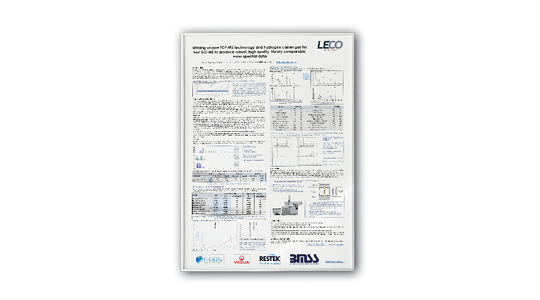
Poster:
„Utilizing unique TOF-MS technology and hydrogen carrier gas for fast GC-MS“
How many sample runs can you fit into your day? With a few simple changes, LECO‘s Pegasus BT can drastically speed up gas chromatography throughput. A faster time-of-flight analysis doesn‘t need to mean lower quality results.

Article:
„A green and sustainable method for Capsicum [...] using H2 Carrier Gas“
Learn how scientists from the University of Messina (Italy) increased their sustainability and „greenified“ their pepper analyses utilizing LECO separation science instruments.
Interested?
We welcome the opportunity to discuss how hydrogen conversion can benefit your lab.
Get in touch with us today to learn more.
If you want to learn more about our products and solutions for Fast GC analysis, book a free ticket to our Virtual Trade Show, or schedule an online demo for a deeper insight in our instruments.
Expedite Gas Chromatography Analysis with Hydrogen
For years, helium has been the go-to choice as a carrier gas for mass spectrometers due to its well-known benefits. However, its limited supply and varying costs have posed significant challenges for labs worldwide.
LECO has conducted extensive research on the use of hydrogen as a carrier gas for GC-TOFMS analysis. We have developed innovative method transfer approaches to ensure a smooth and efficient transition to hydrogen. With our proven expertise in the hydrogen conversion process, we can help labs of all sizes achieve increased chromatographic throughput without sacrificing the sensitivity and accuracy they demand.
As the supply of helium continues to dwindle, the use of hydrogen as a carrier gas for GC applications has become an increasingly attractive option. With both benefits and drawbacks to consider, it requires the expertise of a dedicated team to determine the optimal approach.
In the following sections, we will share the details of our approach, including the method transfer approaches used, the technological benefits, and application examples. At LECO, we understand the importance of providing comprehensive information and support. That's why we have put together a range of resources specifically on hydrogen conversion, to help you make an informed decision.

Don‘t miss out on this unique opportunity!
We know how valuable your time is, so we‘re bringing the experts and resources closer to you to show you how LECO instrumentation and hydrogen carrier gas can revolutionize your analysis, with live demos of our instruments and software.
Instrument Portfolio for Hydrogen carrier gas
We understand that the conversion from helium to hydrogen carrier gas can be a crucial step in mass spectrometry, where speed and sensitivity are of utmost importance. At LECO, we take pride in designing our PEGASUS® mass spectrometers to deliver exceptional performance in Fast GC applications with both helium and hydrogen carrier gas. Our instruments are built to provide high-speed analysis without compromising sensitivity, making them the ideal choice for labs looking to switch to hydrogen. In addition, with our innovative StayClean® Ion Source technology, you can be confident that your instrument will operate at peak efficiency, free from the need for frequent cleaning and maintenance.
On-demand Videos & Presentations
Helium is becoming an increasingly limited natural resource; using Hydrogen to achieve increased chromatographic throughput in GC applications is attractive. Both have advantages and disadvantages. LECO has for years investigated the use of Hydrogen as a carrier gas for GC-TOFMS analysis. In the following we are going to present you the method transfer approaches used, the technological benefits, and application examples.
► „Fast GC / Hydrogen Method Transfer Overview & Application Examples“
by Nick Jones, Sebastiano Panto, Lena Dubois, Joe Binkley (LECO Corporation, St. Joseph, MI USA)
Please complete our form to watch the videos on-demand.
► „GC×GC Analysis with Chroma TOF Tile“
by Lena Dubois (LECO ETAC, Berlin, GER)
Please complete our form to watch the videos on-demand.
► „GC-MS Analysis Workflow utilizing ChromaTOF Sync“
by Liz Humstom-Fulmer (LECO Corporation, St. Joseph, MI USA)
Please complete our form to watch the videos on-demand.
► „Discovery Workflow Best Practices for Environmental Contaminants“
by Albert T. Lebedev (Lomonosov Moscow State University), David E. Alonso (LECO Corporation, St. Joseph, MI USA)
Please complete our form to watch the videos on-demand.

Webinar: Enhance Your GC-MS Workflow
With ever-increasing demands on your time, labor, and resources, optimizing your workflow is essential. Learn best approaches from GC-TOFMS experts to enhance your one- and two-dimensional gas chromatography applications (GC-MS and GC×GC-MS) in this webinar.
Library – Hydrogen Carrier Gas Publications
Read our following publications and discover more about GC-TOFMS analyses with hydrogen as a carrier gas. We kindly ask you to submit our form. Afterwards you‘ll get access to all files.

App Notes:
Hydrogen-based GC-TOFMS Analysis
The shortage of helium and its increased costs are encouraging laboratories to find suitable alternatives. Learn how LECO achieves quality results utilizing Hydrogen as a carrier gas.
„Analsysis of Teatree Oil“
„Citrus Essential Oils“

Poster:
„Utilizing unique TOF-MS technology and hydrogen carrier gas for fast GC-MS“
How many sample runs can you fit into your day? With a few simple changes, LECO‘s Pegasus BT can drastically speed up gas chromatography throughput. A faster time-of-flight analysis doesn‘t need to mean lower quality results.

Article:
„A green and sustainable method for Capsicum [...] using H2 Carrier Gas“
Learn how scientists from the University of Messina (Italy) increased their sustainability and „greenified“ their pepper analyses utilizing LECO separation science instruments.
Interested?
We welcome the opportunity to discuss how hydrogen conversion can benefit your lab.
Get in touch with us today to learn more.
If you want to learn more about our products and solutions for Fast GC analysis, book a free ticket to our Virtual Trade Show, or schedule an online demo for a deeper insight in our instruments.
Microplastics are a ubiquitous presence in the world, found from Arctic snow to Antarctic ice and everywhere in between. There are trillions of microplastic particles floating on surface water, and everyone from infants to adults are presumed to be ingesting anywhere from dozens to tens of thousands of these particles every day.

It's that time of year again, when holiday songs play 24/7 on the radio and people start wondering what, exactly, frankincense and myrrh are and why they make good gifts. LECO placed these two oils in a Pegasus BT 4D to see the difference.
Frankincense (from the boswellia tree) and myrrh (from the commiphora tree) are both resins which are commonly used as perfumes and incense and have been for thousands of years. Essential oils extracted from these resins can be analyzed using gas chromatography, which is precisely what the scientists at LECO did.
By extending the analysis to a second dimension using the GC×GC analysis of the Pegasus BT 4D, even more information can be gleaned from the samples extracted from these substances. GC×GC analysis also inherently produces structured chromatograms where chemically similar analytes tend to elute in ordered bands through the GC×GC separation space. This provides context for identification and allows for rapid visual characterization of the compound classes.
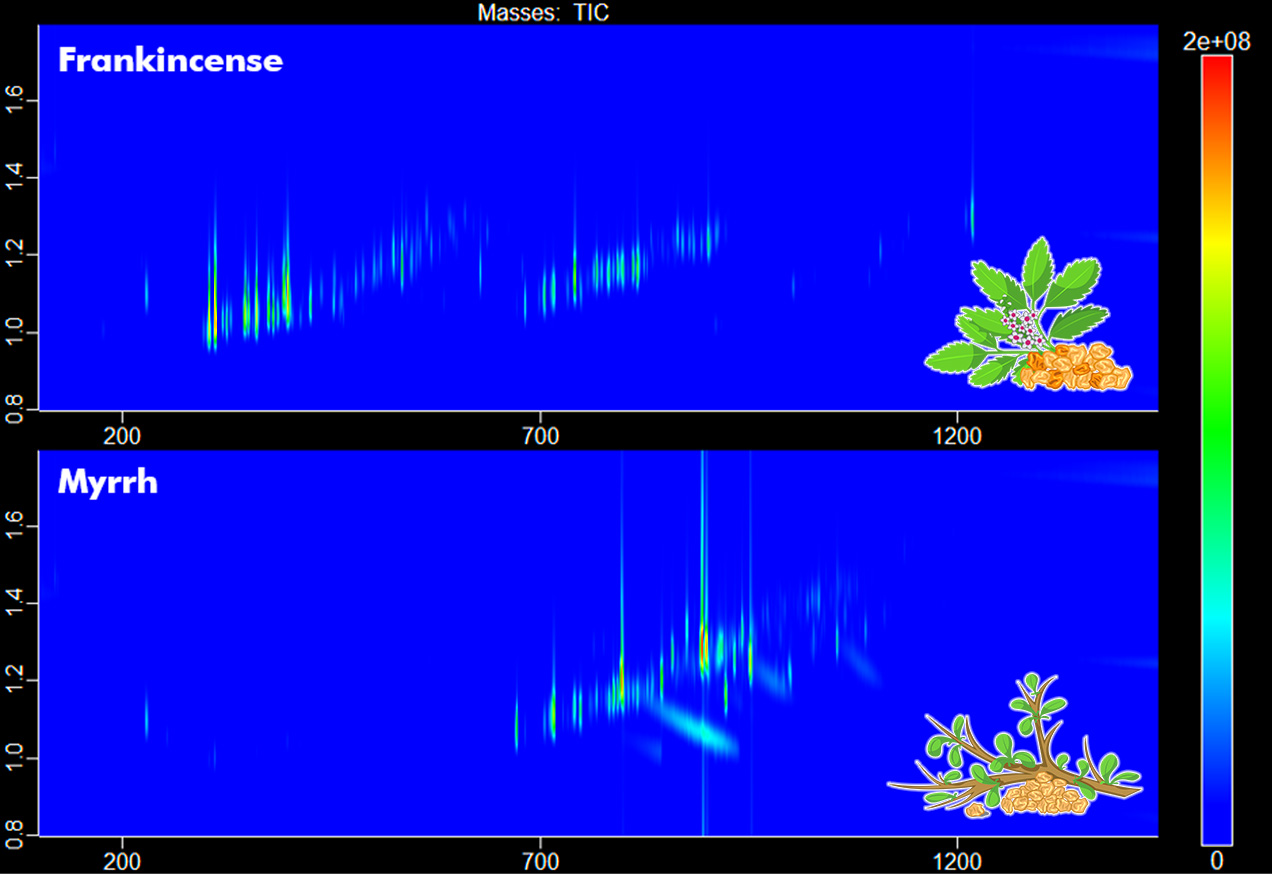
For a more detailed breakdown of the analysis of these oils and how the GC×GC separation provides a huge advantage in the characterisation and comparison of these samples, fill in the form and check out our application note.
UMR QualiSud, University of Avignon, France
"I use a LECO mass spectrometer for plant metabolomics ; it is an efficient machine with a very low detection limit and the Chromatof deconvolution algorithm allows to find hundreds of compounds in complex extracts."
Czech Academy of Science, Tschechische Republik
"Compared to GC equipped with a single column, the Pegasus 4D enabled me to separate unbelievable number of analytes! Tens of thousands of separated peaks in one run was not an exception. But where the separation was not perfect, ChromaTOF software and its deconvolution algorithm did the job. Such excellent ‘separating power’ helped me discover new types of plant PCB metabolites."
